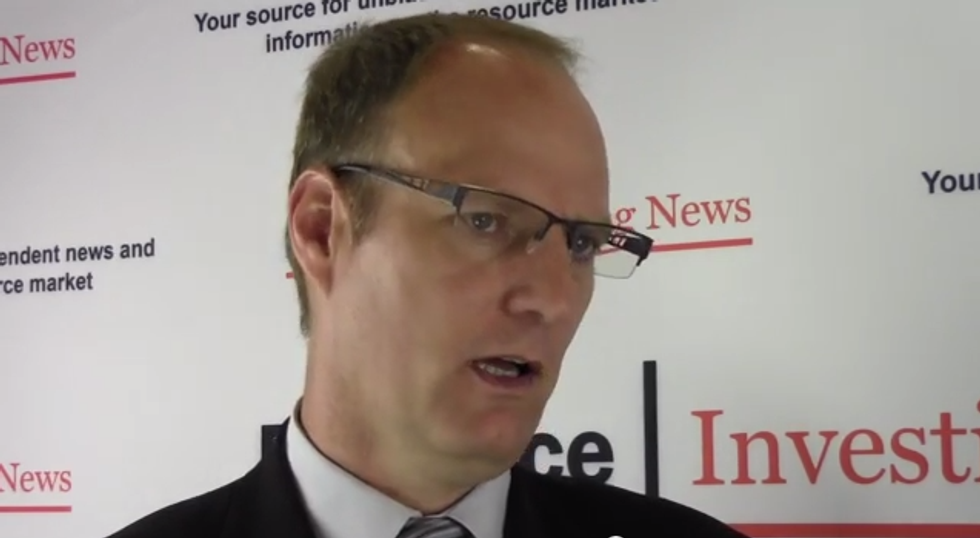At PDAC Schaefer laid out the positives and negatives surrounding the oil space. He also touched on what’s going on with natural gas.
The 2015 PDAC International Convention, Trade Show & Investors Exchange was held in Toronto last week, and as always it saw a lineup of thought leaders and industry professionals speak on what they expect for 2015.
When it came to the oil and gas industry, Keith Schaefer, publisher of the Oil & Gas Investments Bulletin, was the expert on the roster. Here’s a look at what he had to say about those spaces.
Positive points for oil
According to Schaefer, despite the negative stories surrounding oil supply and demand, the reality is that both have been unbelievably constant in the last 40 years. “It’s crazy to think of the gyrations that have gone on in the oil price over the last 15 years given how steady supply and demand have been,” he said.
He explained that forecasts late last fall regarding 2015 oil demand were all predicting an increase of only 600,000 barrels per day. However, once everyone realized that lower prices do in fact stimulate demand, the number was brought up to 1 million barrels per day. Schaefer said one of the reasons for the incorrect forecast was the lack of media coverage on oil demand outside of North America. Indeed, oil demand growth has been enormous in the Middle East, Africa and Asia, with China being the “poster child” for how much oil demand has increased in Asia.
“The last time oil hit $10 a barrel was back in 1998. Since then, Asia has gotten back on its feet economically and it’s been the largest increase in demand that we’ve ever seen. Africa and the Middle East have overtaken Europe almost in terms of its demand. Asia has well overtaken North America with its demand, and that’s why we are seeing such strong oil prices around the world,” he explained.
Not so fast…
That said, not all is rosy in the oil space. Pointing at the US shale oil revolution, which has built up steam recently, Schaefer said that what many people don’t understand is that due to high gas content, oil producers aren’t actually getting the full cost per barrel and aren’t making any money.
“The oil producer’s favorite line is, ‘hey, it only costs $55 per barrel to produce my product and oil is $97’ — so they see a $44 profit, but that’s not the case. Even though oil is $97, that’s not what they are getting per barrel because gas is so cheap. The shale revolution doesn’t make any money, it makes zero cash flow,” Schaefer noted. Specifically, with WTI crude oil priced at around $50 per barrel, the industry is losing about $12.5 billion per quarter and $50 billion annually.
Looking at Saudi Arabia’s decision to drop the price of oil last fall, Schaefer said that while the country wanted to teach Americans a lesson, “who they are after are the irresponsible lenders who keep lending these shale companies all this money at ridiculously low interest rates.The shale revolution would’ve never happened at 5- to 7-percent interest rates.”
Notes on natural gas
Touching briefly on natural gas, Schaefer noted that two things that heavily influence its price are weather and production. Production has been particularly influential lately, and Schaefer used a chart to show what has been going on with US gas production in relation to the price over the years.
“Right up until 2010, you can see that price and inventories traded in tandem, and that’s what makes sense. Price reflects the supply and demand fundamentals. But what happened in 2011 as a huge amount of gas kept coming onstream and overwhelming any demand, gas basically started to flatline. You see a drop down in 2012 when inventories got really bad,” he said.
He is bearish on gas this year given that its price is doing a dip similar to the one in 2012, and believes that it’s going to be an ugly time for producers in Western Canada.
“You can sum up the gas market in one word: Marcellus. Marcellus has gone from 2 billion cubic feet a day four years ago to 19 billion cubic feet a day today, when nobody ever thought they would be above 12 or 13 billion before 2020,” Schaefer opined.
He said the gas formation is much larger than anything else that’s out there and has been much more productive — that has allowed producers to get rolling a lot faster than anyone thought.
“Part of the reason for that is debt, and part of it is we are still making improvements in fracking, literally every month. We are improving well deliverability, we are increasing the amount of gas coming out of a well per foot of well bored every month. We have not hit the limits yet of what is possible with fracking,” he said. “Until Marcellus peaks in production, until you see three to four months of flat production, you don’t need to worry about buying any gas stocks. My best guess is two to three years from now.”
Securities Disclosure: I, Kristen Moran, hold no direct investment interest in any company mentioned in this article.
Related reading:






